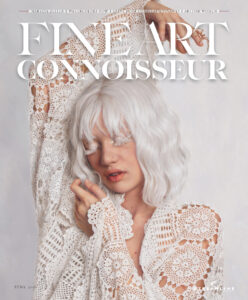
From the Fine Art Connoisseur May/June 2025 Editor’s Note:
A New Era for Arts Philanthropy

Economically speaking, this spring has been a rollercoaster ride, and by the time you read this, the instability will surely be continuing. I am not getting political here, but I do want to focus on just one comparatively overlooked area of the chaos that will impact readers of Fine Art Connoisseur.
At the time I’m writing, grants supporting arts projects already awarded by the National Endowment for the Humanities (NEH) and the Institute of Museum & Library Services (IMLS) have been frozen. It is likely that the National Endowment for the Arts (NEA) is on the chopping block next. I know something about these agencies because, last autumn, I served on a panel of arts professionals hired (for a small fee) to review and rank NEA grant applications submitted by art museums nationwide.
For Fiscal Year 2024, IMLS had received a federal appropriation of $294.8 million, and the other two agencies got $207 million each. That’s a grand total of $708.8 million for a nation of 340 million people — just over $2 per resident. The projects supported occur in every U.S. state and territory, and the presenting organizations range widely in size, from Manhattan’s enormous Metropolitan Museum of Art to tiny one-person-staff outfits in the countryside. The majority, in fact, go to the smaller entities far from the art capitals, partly because the latter have lots of private and municipal support already, and partly because the federal agencies’ mandate has always been to spread the generosity around.
As the cuts take effect (subject to a few ongoing lawsuits that will probably fail), most of the grantees are now faced with a dilemma: should we continue mounting the proposed exhibition (or other project, such as a reinstallation), or should we cancel it to avoid running a deficit? Because most nonprofits must operate on a balanced budget, they probably will cancel, and that means less for you and your family to enjoy at the local museum (or other visual art organization) later this year.
Alternatively, if they have the bandwidth, these presenters will soon solicit you and other individuals to donate funds to close the budgetary gap. The U.S. has a stellar history of private philanthropy; indeed we’ve been admired internationally since the 18th century for the let’s-all-pitch-in character of our giving. In fact, the federal cultural agencies mentioned above emerged only in the 1960s; before that era, if your community’s members did not pitch in with cash contributions, then you did not have a museum, or at least one with a lively program.
The current situation means that we all must get back into the habit of donating (or donating more) to the local and regional presenters we love. Some folks may be able to contribute only the $2 per person the feds gave until last year, while others have the capacity to give much more. That’s your decision, but I hope you will join me in dusting off the checkbook and helping our favorite institutions thrive. Now you — not awards panelists like me — can choose which ones to support, and that could actually be fun.
Please get involved, and please keep Fine Art Connoisseur posted on how things are going in your arts community.
What are your thoughts? Share your letter to the Editor below in the comments.
Download the current issue of Fine Art Connoisseur here.
Sign up to receive Fine Art Today, the free weekly e-newsletter from
Fine Art Connoisseur magazine.








I feel that art, like all other businesses, should rely on the market. If people like our art enough, they’ll pay the price to have it. If we have to take the money from their wallets through taxation, it doesn’t say much about our art.